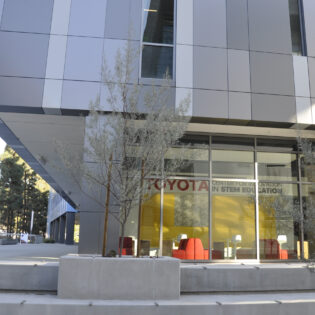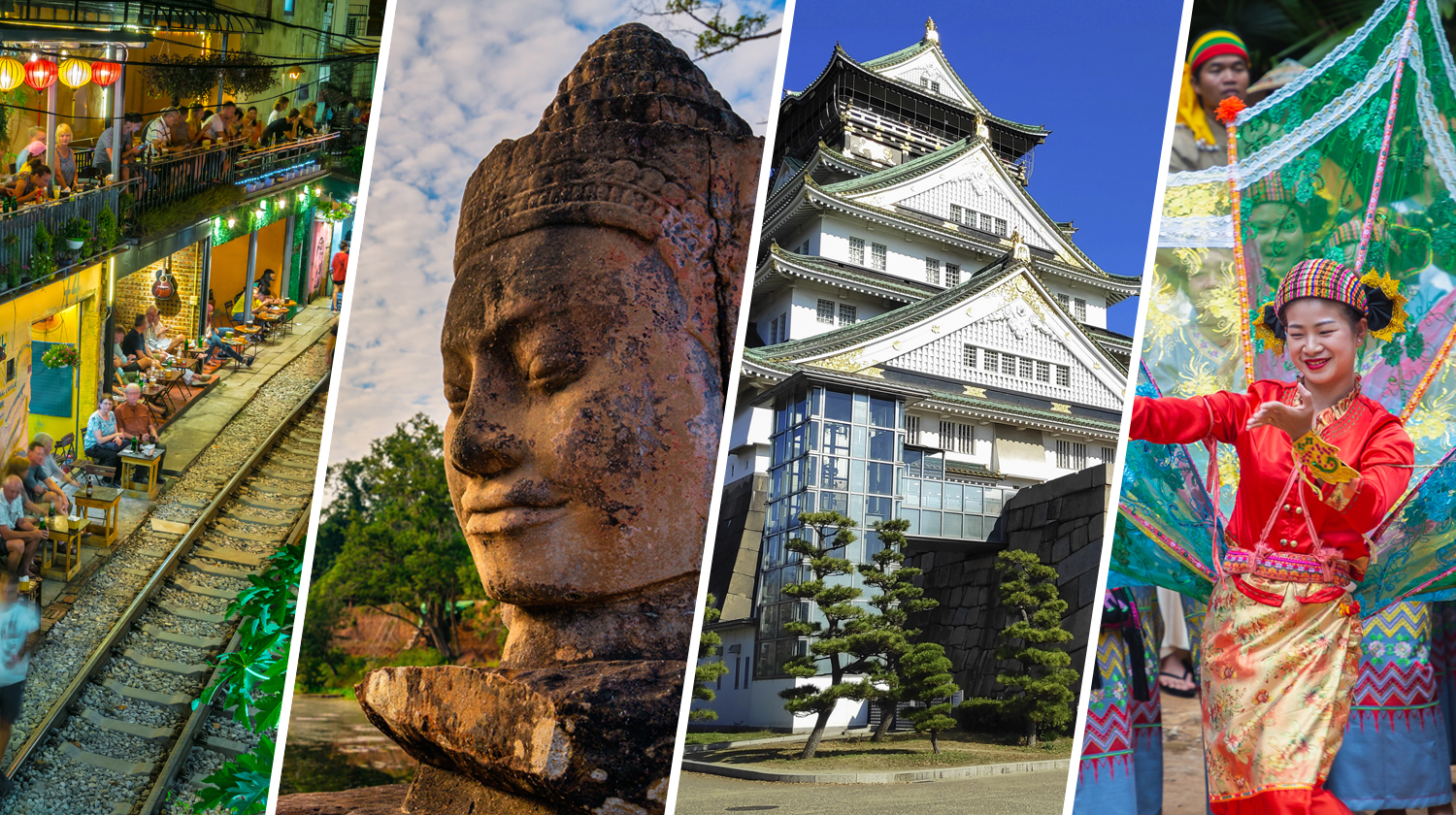Photo courtesy of CSUDH Campus News Center
By Destiny Jackson, Perspectives Editor
The South Bay has been shaped by many cultures.
Native peoples first settled it, Spanish and Mexican roots plunge deep, Anglo Americans stole it in 1848, and the souls of Black folks are woven into the DNA of the university at its center, California State University, Dominguez Hills, from the 1965 Watts Insurrection that prompted its move to Carson, to CSUDH having the highest percentage of Black students of any California State University school.

But the influence of Asian American and Pacific Islanders on the region rivals them all.
Just east of this campus, more people of Cambodian descent live in Long Beach than anywhere in the world outside Cambodia. To the west, the city of Gardena was long known as “Little Tokyo of the South Bay.” Carson, the city this university is in, had the highest percentage of Filipino and Pacific Islanders of any LA County city , according to the 2000 U.S. Census. And a 15-minute walk from CSUDH is Victoria Park, where Los Angeles Samoan flag day is held every August.

The Toyota USA Foundation’s $4 million gift to the university helped build the 87,000-square-foot Science and Innovation Building. The Toyota Center anchors the ground
floor on the northwest side of the building.
On this campus, Toyota, which has its North American headquarters in neighboring Torrance, is title sponsor of the Toyota Center for Innovation in STEM Education, an anchor of the university’s $82 million Science and Innovation Building. CSUDH has more than 20,000 photographs, documents and other artifacts documenting the 20th Century Japanese American experience, and Greg Williams, director of the university’s Archives and Special Collections, is also project director for the CSU Japanese American Digitization Project.
But even with that intimate past and present, it wasn’t until this semester, some 52 years after the first Asian American studies program was launched at San Francisco State, that a major will be offered at CSUDH dedicated to the study of Asian American and Pacific Islander cultures, identity and experience.
All in the Timing
It’s taken a long time, but the timing also seems appropriate. Among the harsh lessons of 2020, from the growing awareness among all Americans of the reality of Black lives constantly in danger to the harrowing images of the children of immigrants being thrown in cages and disappearing from their parents, is the sharp uptick in anti-Asian racism.
But amid the negativity are positive signs. America’s great racial reckoning is also a pivotal moment to learn about race relations and cross-cultural connections and challenging the pillars supporting systemic racism in corporate and academic America.
From the creation of a racial reconciliation task force at this university, to the recently passed requirement that every student entering the system in fall 2021 must take an ethnic studies class focusing on either Black, Chicano/a, Native American or Asian American and Pacific Islander (AAPI) studies, higher education throughout the state is taking legitimate steps toward ensuring a more equal society through exposing students, faculty and staff to alternative narratives.
The process for CSUDH’S AAPI major which was officially unveiled in a week-long series of events in October, began long before the turbulent summer of 2020.
Minor First Offered in 1992
The school first began offering an Asian Studies minor in 1992. Dr. Jung-Soon Park, CSUDH’s Asian Pacific Studies coordinator began working at CSUDH in 1999. She has long advocated for the creation of a baccalaureate degree.
She told the CSUDH Campus News Center in July that she felt it was “ critical to establish a B.A. program here, given the economic, political, and sociocultural significance of the region, as well as the demographics of our student body and the neighboring communities.”
The creation of the major, which began in earnest in 2017, Park said, coincided with the release of a 2016 report from a CSU task force on the advancement of ethnic studies. That process eventually led to the passing of California Assembly Bill 1460, the CSU ethnic studies requirement, which was signed into law in August, one month after the CSU chancellor approved the Asian-Pacific Studies major at CSUDH.
The new major coupled with the heightened demand for ethnic studies classes due to the CSU ‘s new requirement couldn’t have worked out better for CSUDH’s Asian American program, said Dr. Mary T. Lacanlale, a lecturer in the Asian Pacific Studies program.
“Now that [AB 1460] passed, it perfectly coincided with Asian-Pacific studies becoming a major,” Lacanlale said. “We hope that with ethnic studies on everyone’s minds, it will help [put] Asian-Pacific studies on equal Footing with the other ethnic studies on our campus.”

Considering that California is the state that birthed ethnic studies as an academic discipline thanks in no small part to the Asian-American Political Alliance and its involvement with the Third World Liberation Front, the coalition of ethnic student groups on California campuses that led the crusade, the question of why it took so long for CSUDH to offer a major seems valid.
It certainly isn’t for lack of numbers.
Asian American Enrollment Steady
Asian Americans make up 16.4 percent of California’s population, the largest of any state. LA County has the highest number, around 1.5 million According to CSU data, in 2019 Asian Americans comprised 8 percent of CSUDH students (1,356) , and Pacific Islanders less than 1 percent (52).
That trailed Black students by 3 percent and was 1 percent higher than white students. But since 2000, as Latinx numbers have grown from 29 percent to 64 percent and Black numbers have dropped from 27 percent to 11 percent and white numbers from 24 percent to 7 percent, Asian American numbers have stayed relatively constant: 9 percent in 2000, 8 percent in 2019.
And it wasn’t lack of interest.
In an effort to gauge student interest in a new major, Park conducted a survey in spring, 2017. “About 58.68% and 56.48% of the respondents agreed that a major in Asian-Pacific Studies and Asian/Pacific Islander Studies, respectively, [was] needed,” Park said.
But even armed with this data, it was a long road to get AAPI recognized as a major. Part of that was the time-intensive process, which involved paperwork and approval from the campus level to the Chancellor’s office.
Generally, in order to receive approval, new programs have to be tied to social, demographic and other economic trends and must be weighed against the interests of incoming students. Along with student interest, surveys and studies must be done examining the diversity and inclusivity of a new major, as well as research on job opportunities and degree usability.
But once Park conducted her campus survey, and processed the data, she was convinced that a new major was possible.
““The growth amounted to almost 300% from spring 2016 to fall, 2016,” Park said. Soon after, APPI became on par with and even sometimes exceeded that of some larger departments in the College of Arts and Humanities. So this took about three to four years, not including the preparations and proposal writing.”
One thing in the Asian Pacific Studies program’s favor was its pairing of Asian American and Pacific Islander studies. One concentration will focus on the study of Asian-Pacific people, societies and countries within a historical, cultural and political perspective. The Asian American and Pacific Islander concentration will focus on Asian American and Pacific Islander American history, community, social and political development. “
“We are one of a small number of programs that connects Asian-Pacific Studies and Asian American and Pacific Islander studies not only in Southern California, but also in the nation,” Park said.
Seven new courses have been adopted for the new major and Park said more are planned.
“We hope to create courses that focus on individual API groups’ experiences, histories and cultures,” Park said. “And to strengthen our courses on Asian Americans and Pacific Islanders.”

